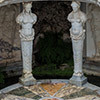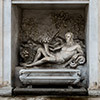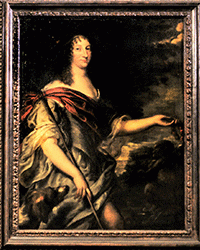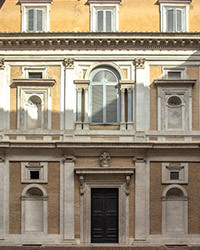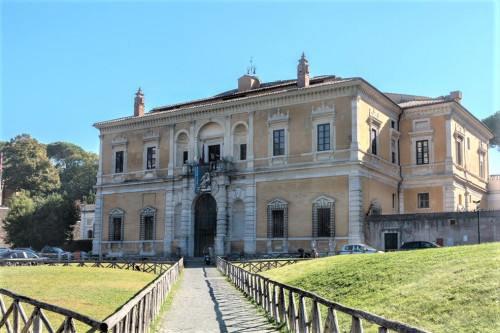
Villa Giulia

Villa Giulia, main entrance
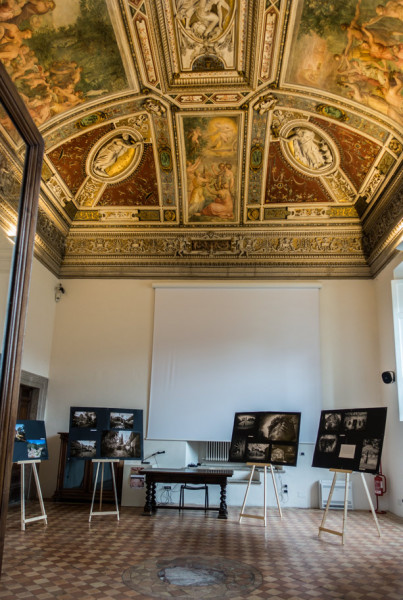
Villa Giulia, view of the main building's vestibule (casino)
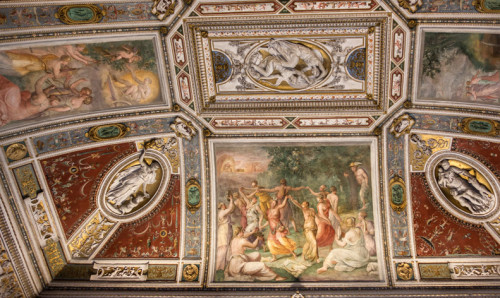
Villa Giulia, frescoes in the vestibule of the main building
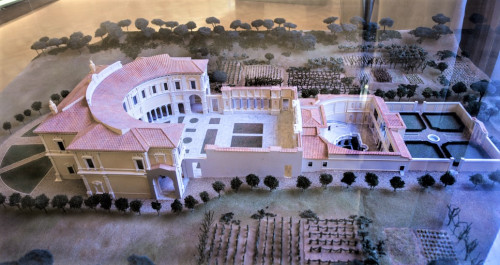
Villa Giulia, mockup of the complex
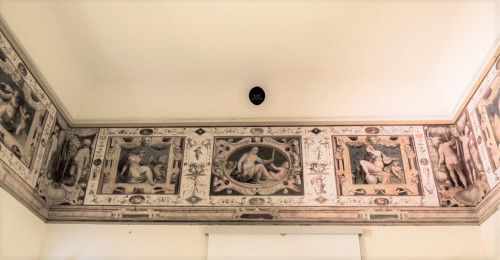
Villa Giulia, casino - piano nobile, Hall of Arts and Sciences
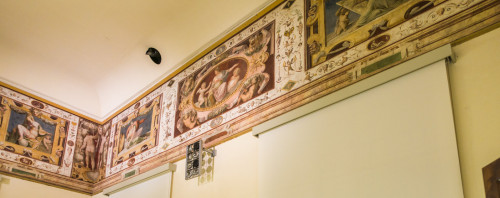
Villa Giulia, casino - piano nobile, Hall of Arts and Sciences
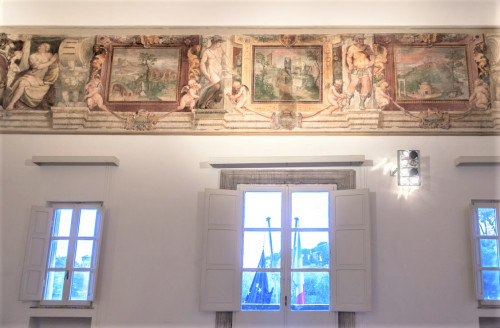
Villa Giulia, casino - piano nobile, Hall of the Seven Hills
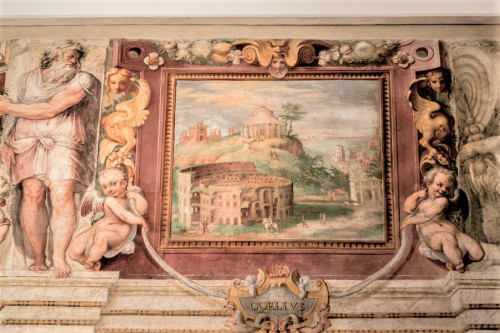
Villa Giulia, casino - piano nobile, Hall of the Seven Hills (Colosseum)
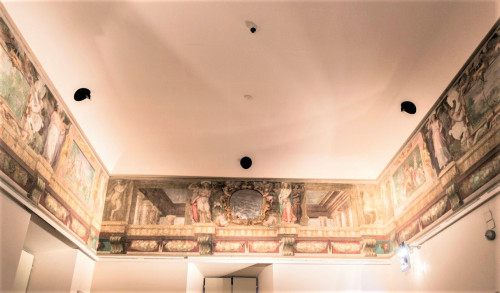
Villa Giulia, casino - piano nobile, Spring Room
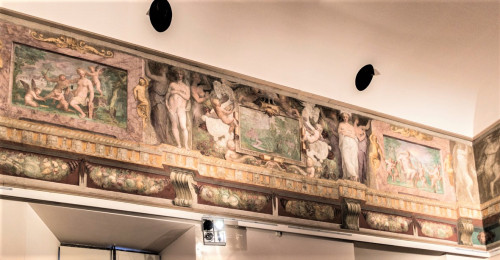
Villa Giulia, casino - piano nobile, Spring Room
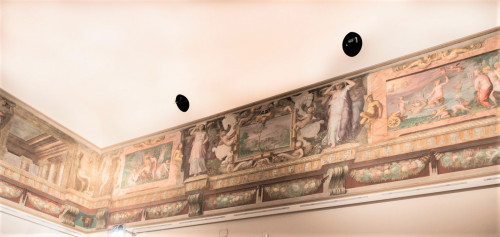
villa Giulia, casino - piano nobile, Spring Room
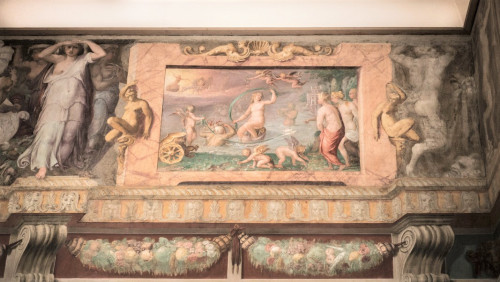
Villa Giulia, casino - Spring Room (Aurora)
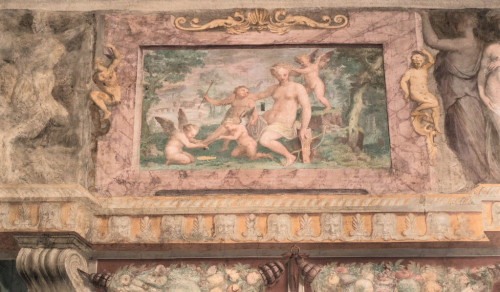
Villa Giulia, casino - piano nobile, Spring Room (goddess Venus)
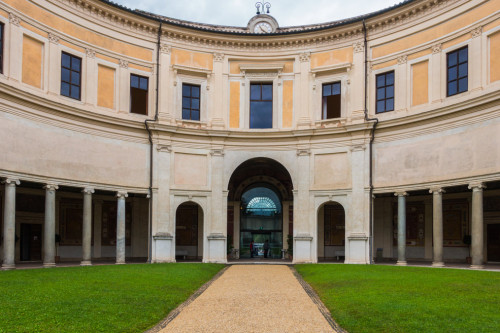
Villa Giulia, casino from the side of the inner courtyard
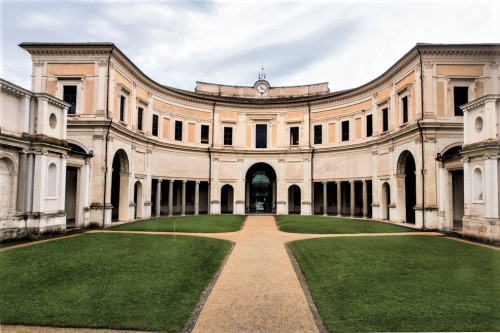
Villa Giulia, courtyard
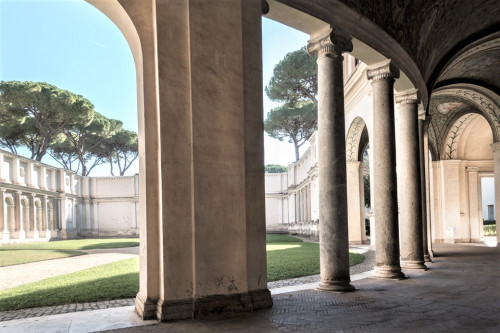
Villa Giulia, view of the courtyard from the casino side
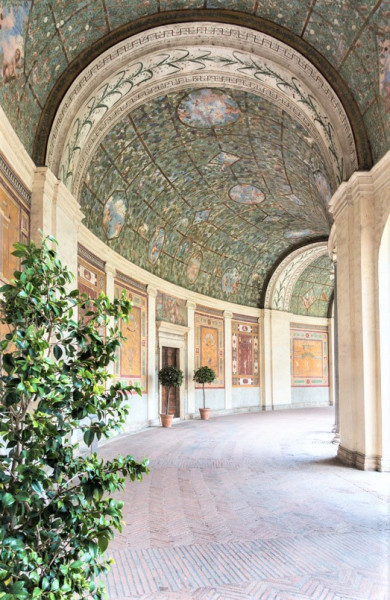
Willa Giulia, painted pergola on the loggia vault
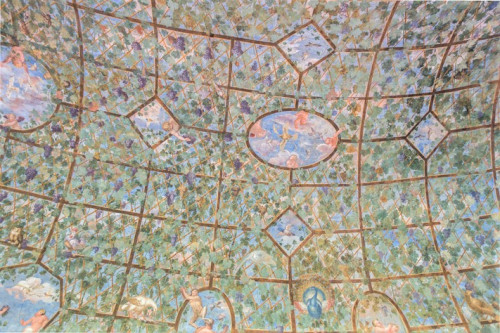
Villa Giulia, casino - decoration of the loggia
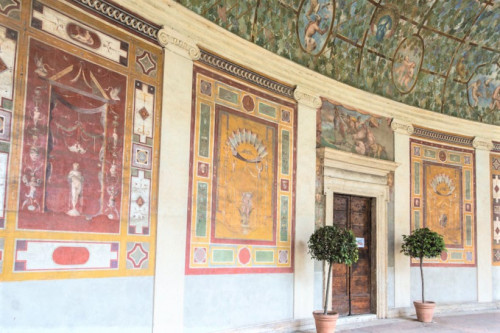
Villa Giulia, view of the loggia with antique frescoes
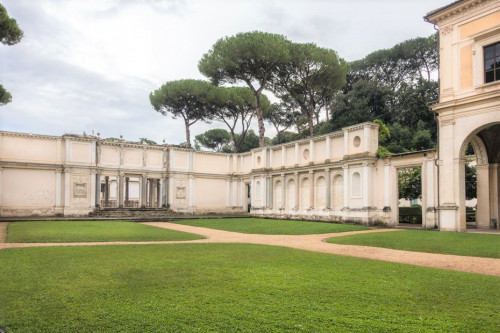
Villa Giulia, courtyard between the casino and the nymphaeum
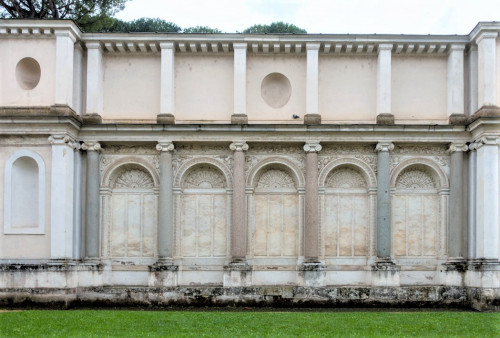
Villa Giulia, the wall connecting the loggia with the nymphaeum
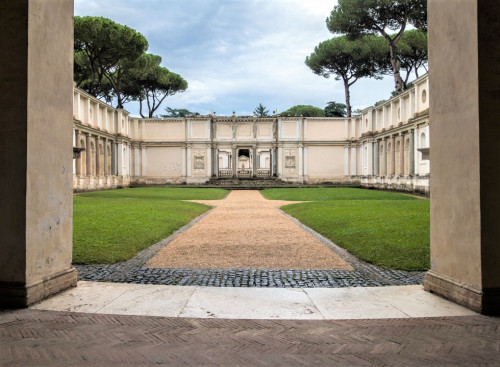
Villa Giulia, view from the loggia on the nymphaeum
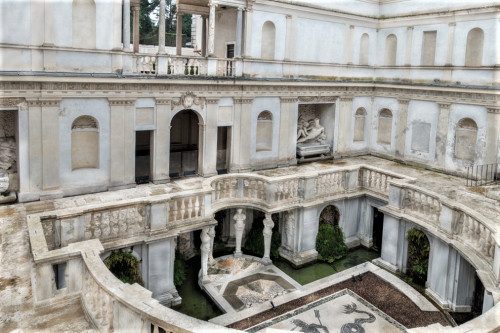
Villa Giulia, nymphaeum
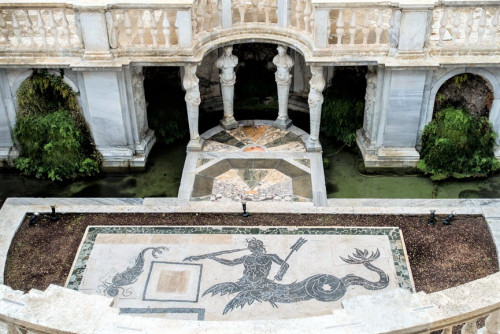
Villa Giulia, nymphaeum with an ancient mosaic
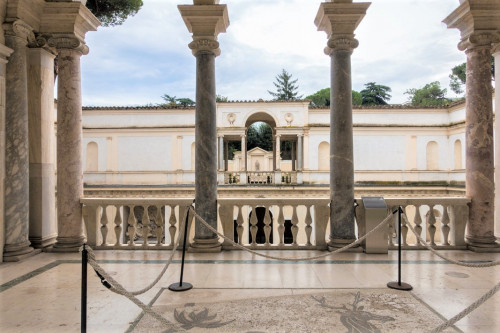
Villa Giulia, nymphaeum with a statue of the goddess Iaso
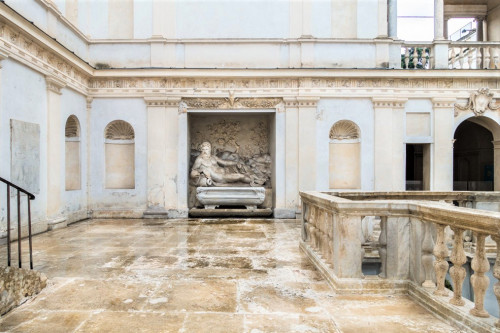
Villa Giulia, nymphaeum - a fountain with a statue of the god Tiber
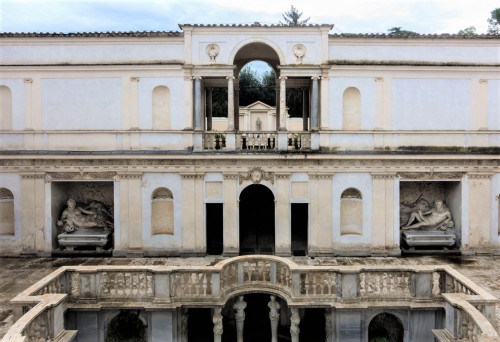
Villa Giulia, nymphaeum with statues of the gods Arno and the Tiber

Villa Giulia, caryatids in the nymphaeum basin

Villa Giulia, nymphaeum - a statue of the god of the river Arno
This picturesque complex, which was the summer residence of Pope Julius III, served this function for nearly four years. The Nymphaeum, the loggias, fountains, and secret passages were to constitute a sort of an imaginarium on the subject of antiquity, allowing the villa’s residents to be transported to ancient times accompanied by dancing or bathing nymphs, merry putti, and exotic birds looking on from the paintings adorning the villa. It is here that Julius III, the head of the Church, and the State of the Church, was able to forget about politics and problems which he had a hard time dealing with. Situating the villa in a basin and the proximity of the river did not improve the health of the ailing and suffering from gout and inflammation of the joints pontifex, and neither did the lavish feasts.
This picturesque complex, which was the summer residence of Pope Julius III, served this function for nearly four years. The Nymphaeum, the loggias, fountains, and secret passages were to constitute a sort of an imaginarium on the subject of antiquity, allowing the villa’s residents to be transported to ancient times accompanied by dancing or bathing nymphs, merry putti, and exotic birds looking on from the paintings adorning the villa. It is here that Julius III, the head of the Church, and the State of the Church, was able to forget about politics and problems which he had a hard time dealing with. Situating the villa in a basin and the proximity of the river did not improve the health of the ailing and suffering from gout and inflammation of the joints pontifex, and neither did the lavish feasts.
As soon as he ascended to the throne of St. Peter, Julius III rapidly started to acquire property and land, which were to become the foundation of the future power of the del Monte family. One of these investments was the agricultural fields found outside the city walls. The current area of the villa is merely one-third of the then estate, which included three vineyards, and a broad park stretching all the way to the banks of the Tiber. The architects and decorators employed by the pope were tasked with creating a villa in the image of the ancient one – which belonged to Pliny the Younger (Laurentinum) and was described by him. During the five years of his pontificate, Julius III was nothing short of a miracle worker, creating arrangements, which today only in a slight manner show the grandeur and wealth of this undertaking. Marble and bronze sculptures, marble cladding, antique reliefs which decorated the niches, multi-colored frescoes of mythological and allegoric theme, of which only some remain, well-cared-for flowerbeds and fountains – all of this made the complex a pearl, whose creators wanted to combine the ideals of antiquity with contemporary art (Mannerism). The pope who stayed here in the summer and his guests who came either by land (via Flaminia) or water (Tiber) enjoyed the freedom and comfort similar to those experienced by ancient aristocrats.
The massive façade of the villa conceals a two-story building, the so-called casino. Crossing its threshold we enter a vestibule with two rooms adorned on the ceiling with frescoes depicting feasts, bacchanalia, and other mythological and allegoric motifs, as well as representations of the cardinal virtues. On the first floor (piano nobile) there are several rooms designated as bedrooms and apartments for the pope and his guests. Their ceilings are decorated with paintings completed by Prospero Fontana and Taddeo Zuccari – well-known fresco and stucco artists also employed in other buildings funded by the pope (Palazzo di Firenze). These paintings are a reference to mythology (the story of Venus), but also show views of the seven hills of Rome and allegories of science and art.

The guests visiting the pope, coming in through the dark vestibule of the casino, immediately entered the sun-drenched courtyard, surrounded by two semi-circular loggias. Their eyes followed the axis set out by the architects where in the distance, framed by other architectural elements, the statue of the ancient goddess was visible. Looking around, they probably could not contain their adulation for the elaborate concept of the aforementioned axis, on which two independent pavilions were placed. When they looked to the left and right they were able to admire the aforementioned loggias with vaults covered with frescoes with the motif of a pergola intertwined with vines, inside which strange putti with cloven hooves, nymphs, or exotic birds sometimes appear. On the other hand, the walls of the loggia were decorated with paintings that were a direct reference to the painting of ancient times, as if transforming the visitors to antiquity. However, when they directed their gaze towards the enterance through which they came, they noticed two nude youths, lifting a curtain. Most likely they felt the pleasant atmosphere of relaxation, summer freedom, and cheerfulness, which were accompanied by curiosity regarding what else had the pope prepared for them (or more appropriately for himself). And while the façade of the casino seems raw, the one from the side of the courtyard which is shaped like an exedra is delicate and separated by slender Ionian columns, above which there are windows of the aforementioned papal apartments.
Following along the central axis we can see as the arms of the loggia are transformed into a kind of a wall separated by columns and niches, which in the past housed ancient sculptures and reliefs. It ends with a portico leading into another part of the complex – an elaborate two-story nymphaeum, that is the heart of the entire arrangements, and which still today stuns with its beauty. This location was to be the scenery for all-day feasts taking place on hot summer days with the sound of water and a pool that would cool visitors. It was with this nymphaeum in mind that the pope had water brought to the villa from the old, modernized just for this purpose aqua virgo aqueduct. Looking on from the level of the courtyard we can see the pool on the bottom with an ancient mosaic, which was not added until the XX century, and which is surrounded by grottos with spouting water (today rather slow-moving) and the caryatids found in the center. Directly across there are niches that in the past were used to exhibit sculptures, of which only two remain (allegories of Arno and Tiber), which are at the same time fountains (in the past spouting water). Let us now imagine the colorful paintings surrounding us, with mythological and allegoric compositions (unpreserved), the sound of water, statues shining in the sun, the plane-trees growing nearby which provide delicate shade, as well as the singing of birds in the nearby aviaries – in this way we might feel the former aura of this place.

Moving on to another part of the villa accessed by twisting, symmetrically run from both sides stairs, we find ourselves in a room, coming out onto a square garden; on its axis, there is a sculpture depicting a healer – the goddess Iaso, the daughter of Asclepius, visible from the enterance. Her presence in this central point may be a reference to her miraculous powers, which the ailing pope probably needed. In the past this was a vantage point for a beautiful view of the Italian garden, stretching to the Tiber.
When the guests, bored with merrymaking wanted to stretch their legs, they could go for a walk around the adjacent vineyards, where wine was produced, or take a stroll towards the river, where at its banks there was a private harbor used by the pope when he returned to the Vatican by water.
Artists who worked on the villa named after the pope (Giulio III) included such architects as Jacopo da Vignola (casino), Giorgio Vasari, and Bartolomeo Ammannati (nymphaeum).
After the sudden death of Julius III in 1555, despite the estate being passed down to the pope’s brother Baldovino and his family the property was confiscated in a rather unusual way by the next pope, Paul IV. The reason for this was the money assigned for its completion from the papal treasury (as was customary). Unfortunately, Pope Julius III did not enjoy the favor of his successor, while the del Monte family itself was too weak to resist this hostile takeover and the gradual deterioration of the villa. The next pope, Pius IV, divided its area. Buildings and some of the gardens became the property of the Apostolic Camera, which dealt with finances and properties of the State of the Church, while the vineyards were given over to the pope’s nepots. The sculptures and other valuable objects found in the complex were transported to the Apostolic Palace, thus adding to the collection of the Vatican Museums (Museo Pio-Clementino); others were sold.

The villa was used sporadically afterward. Thanks to its location from time to time it served as the residence for important people (ambassadors, cardinals, rulers) coming to Rome, before they entered through the Porta del Popolo gate, as was the case with Christina, Queen of Sweden. Later it was used for various purposes – military, hospital, it was a warehouse, it even housed a veterinary school. The nymphaeum on the other hand was used to water horses. In 1870 the villa was confiscated by the newly established Kingdom of Italy. Nearly twenty years later it was bought by the state and destined as a place of exhibition of Etruscan art. Still today they can be found inside the casino as well as within the pavilions specifically constructed for this purpose (Museo Nazionale Etrusco).
If you liked this article, you can help us continue to work by supporting the roma-nonpertutti portal concrete — by sharing newsletters and donating even small amounts. They will help us in our further work.
You can make one-time deposits to your account:
Barbara Kokoska
BIGBPLPW 62 1160 2202 0000 0002 3744 2108
or support on a regular basis with Patonite.pl (lower left corner)
Know that we appreciate it very much and thank You !



























































